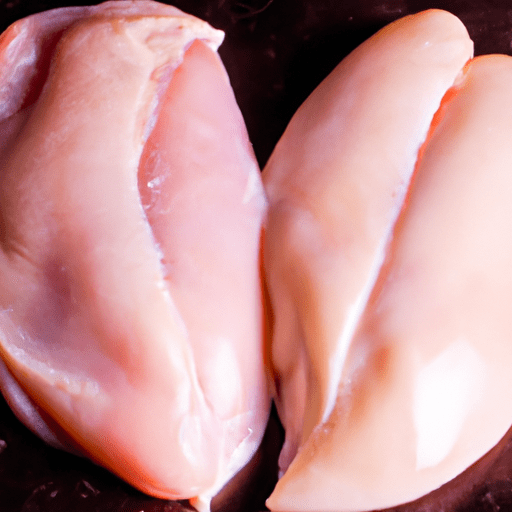Cooking with Chicken Breast Halves: A Versatile Delight
Chicken breast halves are a culinary superstar known for their versatility and lean protein content. Whether you’re a seasoned home cook or a culinary newbie, these tender morsels offer endless possibilities in the kitchen. In this blog post, we’ll explore the taste, common uses, nutritional value, and interesting facts about chicken breast halves that will surely elevate your cooking game.
Taste and Texture
Chicken breast halves are prized for their mild, delicate flavor and tender texture. When cooked correctly, they offer a juicy and succulent experience. With subtle hints of umami, chicken breast pairs well with various seasonings and ingredients, making it adaptable to a wide range of cuisines.
Common Uses in Cooking
Grilling and Pan-Frying
Grilling or pan-frying chicken breast halves are popular cooking methods that help preserve their tenderness. Marinating the chicken beforehand not only infuses rich flavors but also tenderizes the meat. Serve grilled or pan-fried chicken breast halves alongside vibrant salads, roasted vegetables, or creamy sides for a delicious and well-rounded meal.
Baking and Roasting
Baking or roasting chicken breast halves in the oven is a foolproof method that yields moist and flavorful results. Whether you stuff them with herbs and cheese or wrap them with savory bacon, the oven’s gentle heat ensures even cooking and succulent meat. Baked or roasted chicken breast halves are ideal for sandwiches, wraps, or sliced over fresh greens.
Stir-Frying and Sauteing
Chicken breast halves take center stage in stir-fries and sautés, where their quick cooking time and versatility shine. Toss thinly sliced chicken breast with vibrant vegetables and aromatic spices to create a stir-fry bursting with flavors and colors. Pair it with rice, noodles, or quinoa for a satisfying and nutritious meal.
Nutritional Value
Chicken breast halves are a nutritious choice for health-conscious individuals. Packed with high-quality protein and essential amino acids, they support muscle growth and repair. Additionally, chicken breast is low in fat and carbohydrates, making it a popular choice for those watching their calorie intake. It is also a good source of vitamins B6 and B12, selenium, and phosphorus, which contribute to overall health and wellbeing.
Interesting Facts
History and Popularity
Chicken has been a staple in diets throughout history, and chicken breast halves have gained exceptional popularity due to their versatility and lean protein content. As cuisines around the world continue to evolve, chicken breast has become a go-to ingredient in numerous cultural dishes, adapting to local flavors and cooking techniques.
Chicken Breast Halves and Convenience
The uniform shape and size of chicken breast halves make them a convenient choice for meal planning and portion control. Whether you’re prepping meals for the week or cooking a quick dinner after a busy day, chicken breast halves are easy to handle and cook within a short time frame.
Diverse Culinary Applications
From classic recipes like Chicken Parmesan and Chicken Marsala to modern creations like chicken wraps and salads, chicken breast halves are incredibly versatile. No matter your dietary preferences, you can easily adapt chicken breast halves to suit various cuisines, including Mexican, Italian, Asian, and Mediterranean.
Conclusion
Chicken breast halves are truly a staple in every kitchen, offering countless possibilities for delicious and healthy dishes. Whether you prefer grilling, baking, stir-frying, or sautéing, these tender morsels will always deliver a satisfying meal. So, next time you’re in the mood for a lean protein option, reach for chicken breast halves and let your culinary creativity soar!
Chicken Breast Halves
Origin: Chicken breast meat comes from the breast bone of a chicken. It is a popular cut of poultry in many cuisines worldwide.
Common Uses: Chicken breast halves are versatile and can be used in various dishes. They can be roasted, grilled, sautéed, or breaded and pan-fried. They are commonly used in salads, stir-fries, sandwiches, and in many other recipes.
Nutritional Benefits: Chicken breast halves are a good source of high-quality protein and are low in fat, especially when the skin is removed. They also contain essential vitamins and minerals such as niacin, vitamin B6, phosphorus, and selenium.
Unique Properties: Chicken breast meat is typically lean and has a mild, neutral flavor, making it a versatile ingredient that can be paired with a wide array of flavors and seasonings. It has a tender texture when properly cooked.
Historical Significance: Chicken has been consumed by humans for thousands of years. Domestication of chickens is believed to have originated in Southeast Asia. Since then, chicken has become one of the most widely consumed meats globally and has significant cultural and historical significance in various cuisines around the world.




Use the share button below if you liked it.
It makes me smile, when I see it.